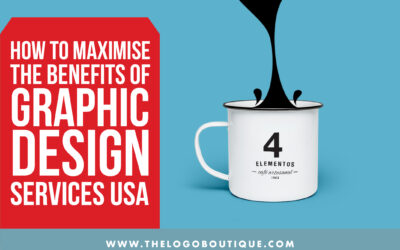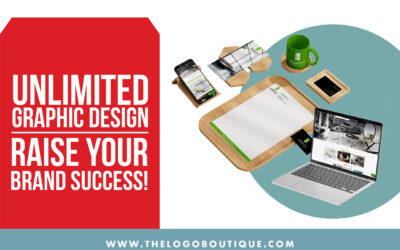The Impact of Color Psychology in Clothing Logo Design
In the world of fashion, a logo is more than just a visual symbol; it’s a statement of identity, style, and values. The colors chosen for a clothing brand’s logo play a crucial role in conveying emotions, associations, and perceptions. This phenomenon is known as color psychology, and it’s a powerful tool in logo design. In this blog post, we’ll explore the significance of color psychology in clothing logo design and how different colors can influence consumer perceptions.
The Psychology of Colors
To understand the impact of color in logo design, it’s essential to grasp the concept of color psychology. This field of study delves into how different colors can trigger specific emotional responses and associations in people. For clothing brands, this means that the colors used in their logos can shape the way customers perceive their brand.
For designers, it is crucial to understand the intent of the brand and then offer them the best logo design services. A clear understanding of the brand’s values and its identity will help them reflect those values in the logo.
Color Choices in Clothing Logo Design
In the fashion industry, color choices are never arbitrary. Each color is carefully selected to align with the brand’s message, target audience, and market positioning. Hence, it is important that when you design a logo, you pick the best logo design services to take care of that job. Let’s take a closer look at some of the most commonly used colors in clothing logo design:
Red: Passion and Energy
Red is a color that exudes energy, passion, and excitement. When used in clothing logos, it can grab attention and create a sense of urgency. Many clothing brands that want to convey boldness and vitality opt for red in their logos. A classic example is the iconic Coca-Cola logo, which uses red to evoke the enthusiasm and happiness associated with its brand.
Blue: Trust and Reliability
Blue is a color associated with trustworthiness, reliability, and professionalism. It’s a popular choice for clothing brands that want to establish a sense of credibility and dependability. Brands like Levi’s and IBM use blue in their logos to instill confidence in their customers.
Green: Sustainability and Growth
Green is strongly linked to nature, sustainability, and growth. Clothing brands that prioritize eco-friendliness often use green in their logos to convey their commitment to environmental responsibility. Companies like The North Face and Timberland incorporate green into their logos to emphasize their dedication to sustainable practices.
Black and White: Simplicity and Elegance
Black and white are classic choices for clothing logos. Black is associated with sophistication and power, while white represents purity and simplicity. When used together or separately, these colors can create a timeless and elegant logo design. Chanel, is a classic example for using black and white logos to reflect their timeless elegance and exclusivity.
Combining Colors: Creating Unique Brand Identities
Some clothing brands go beyond a single color and strategically combine colors to create unique brand identities. For example, the Adidas logo combines black and white with splashes of red, emphasizing its sporty, dynamic image. These combinations can convey a multifaceted brand personality.
Cultural and Regional Influences
The impact of color in logo design can also be influenced by cultural and regional factors. What is perceived positively in one culture may have a different connotation in another. For instance, the color red symbolizes luck and prosperity in Chinese culture, making it a popular choice for logos of brands targeting that market. Understanding these nuances is crucial for brands aiming to expand globally.
Prime Example of Successful Clothing Logos
Let’s take a moment to explore some real-world examples of clothing brands that have harnessed color psychology effectively in their logo design:
- Nike: The Nike Swoosh logo uses a bold black color, symbolizing power and strength. This choice aligns perfectly with Nike’s brand message of empowerment and athleticism.
- Gap: Gap’s blue logo radiates trust and reliability, reinforcing the brand’s reputation as a family-friendly clothing retailer.
- H&M: H&M’s use of red in its logo communicates a sense of excitement and trendiness, appealing to the fashion-conscious audience.
Tips for Using Color Psychology in Logo Design
Now that we’ve explored the impact of color psychology in clothing logo design, let’s wrap up with some practical tips for clothing brand owners and designers:
- Know Your Audience: Understand your target audience’s preferences and cultural backgrounds to choose colors that resonate with them.
- Stay Consistent: Once you’ve selected your logo colors, maintain consistency across all branding materials to reinforce your brand identity.
- Test and Iterate: Don’t be afraid to experiment with color combinations and seek feedback from your audience. Continuous improvement is key.
Conclusion
In the world of clothing logo design, the colors you choose can have a profound impact on how consumers perceive your brand. By harnessing the principles of color psychology and understanding the emotional and cultural associations of colors, clothing brands can create empowering logos. By hiring the best logo design services, they can craft masterpieces for their brand identity.


 Team of Graphic Designers
Team of Graphic Designers Team of Graphic Designers
Team of Graphic Designers

